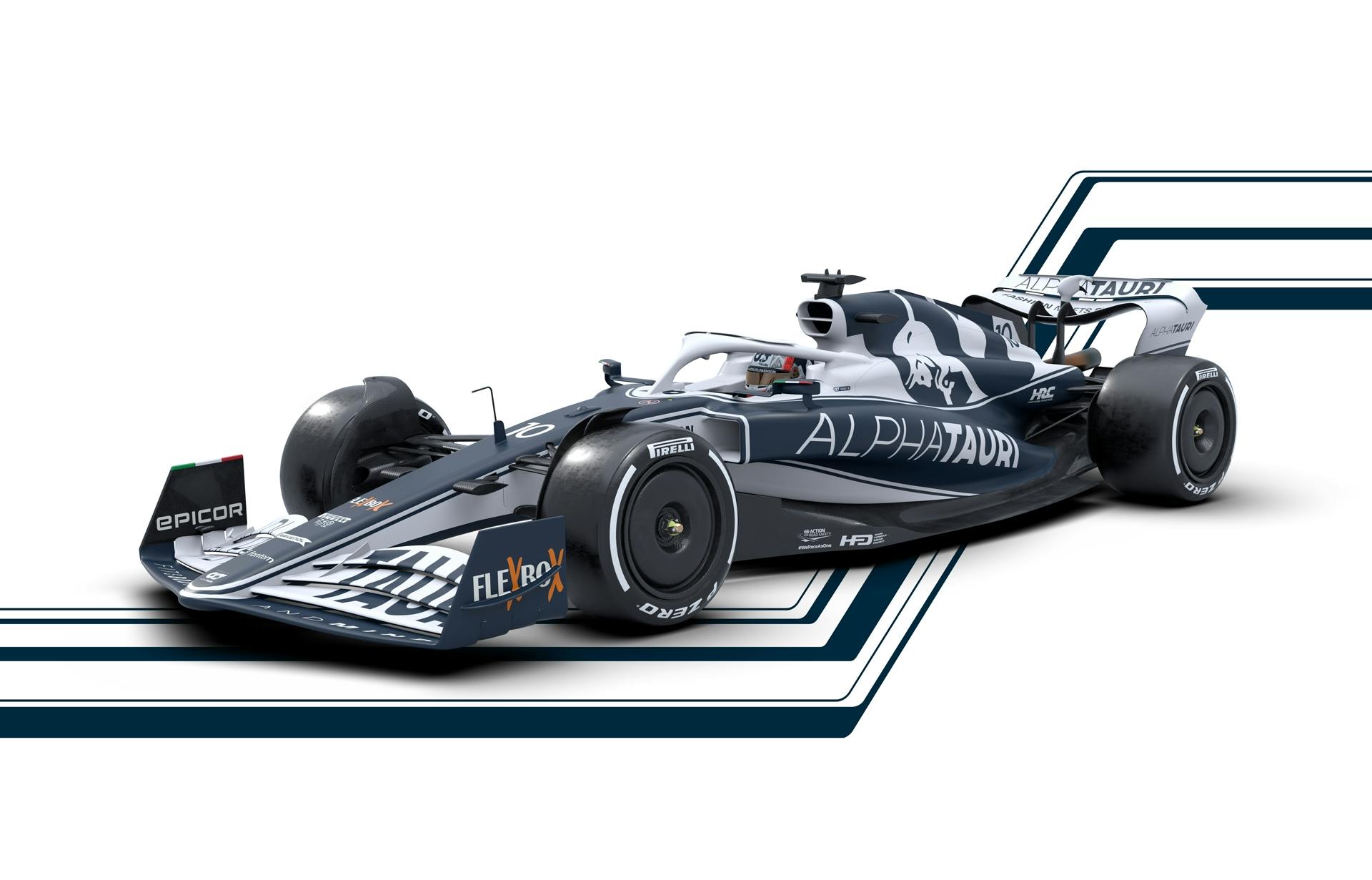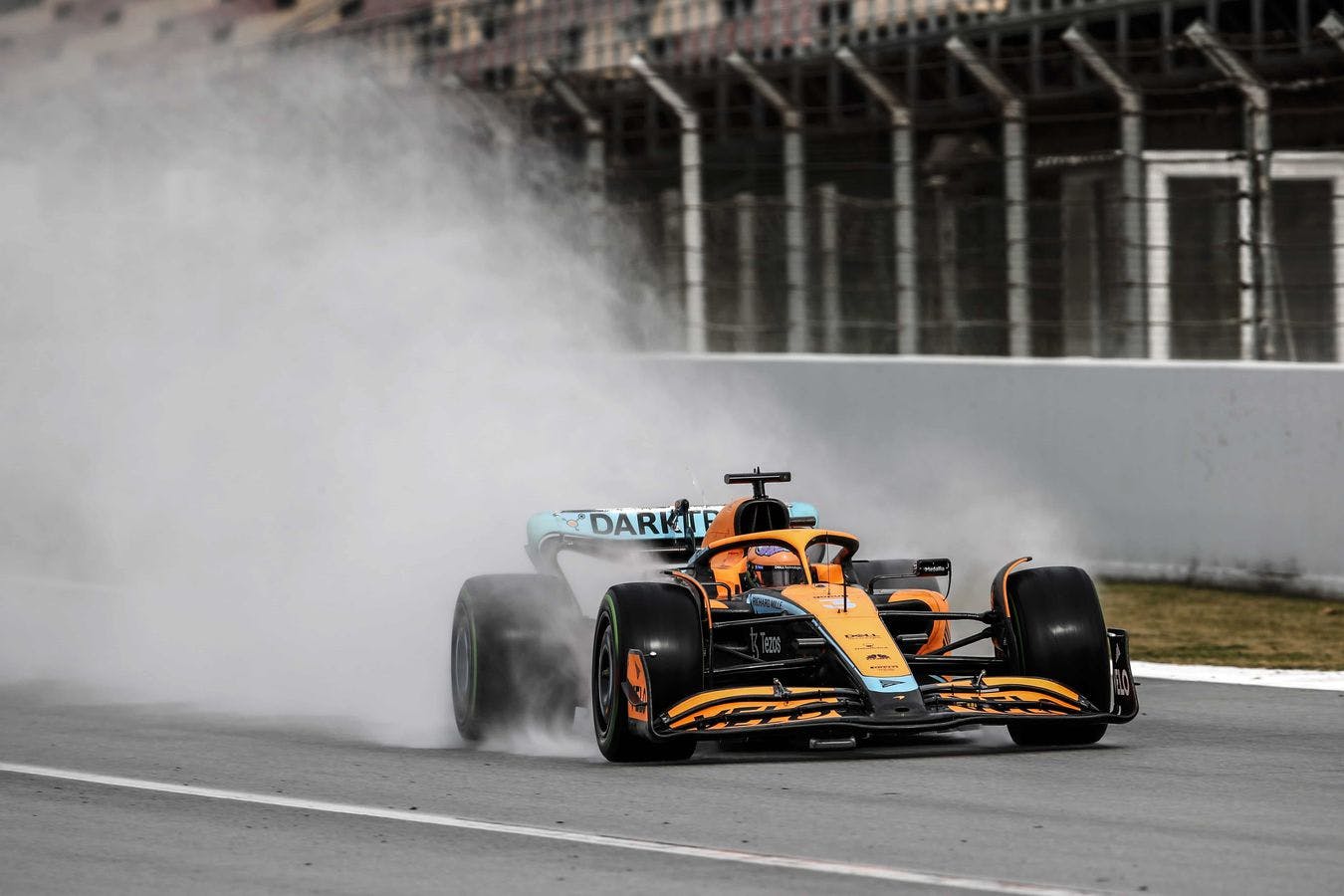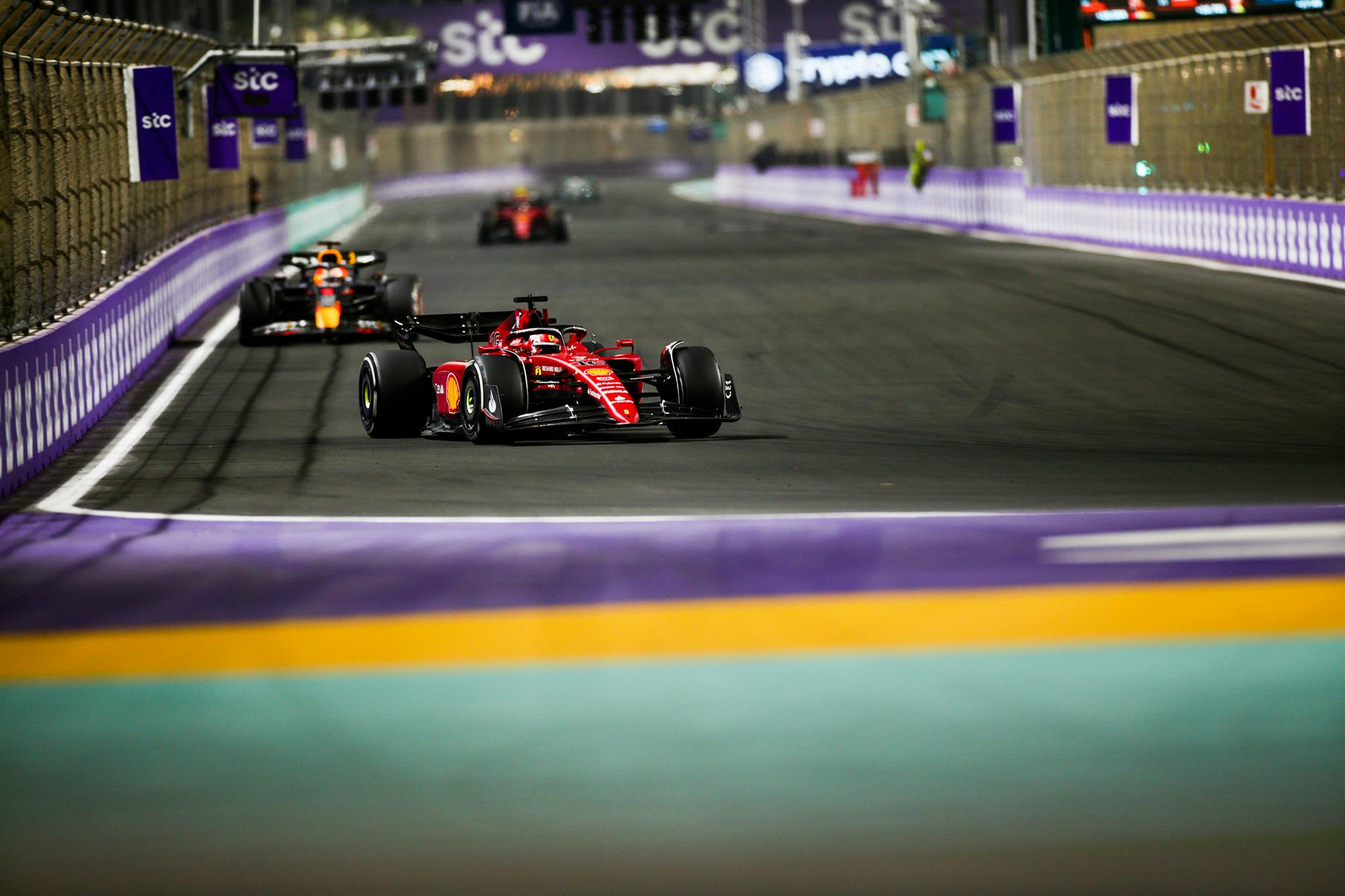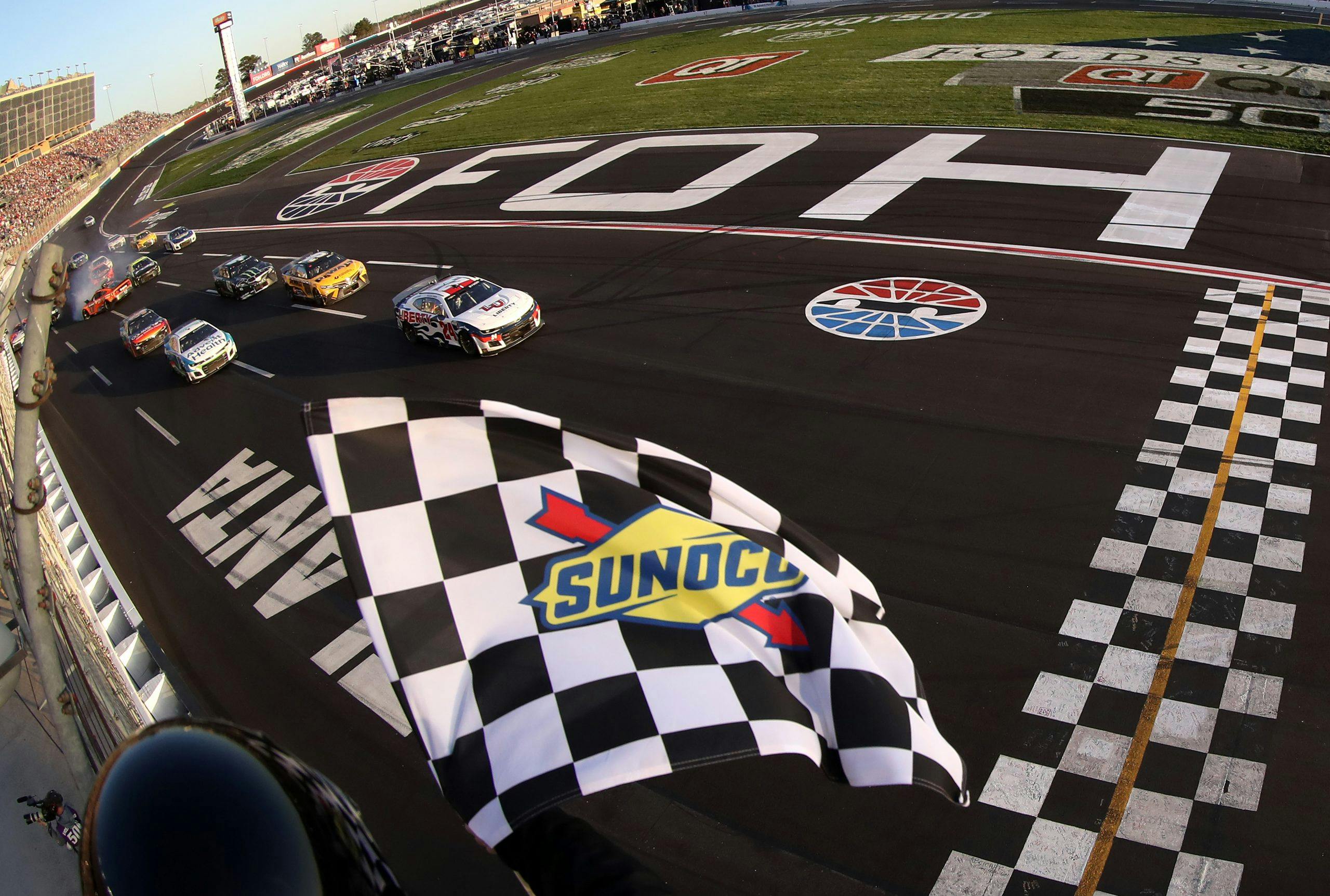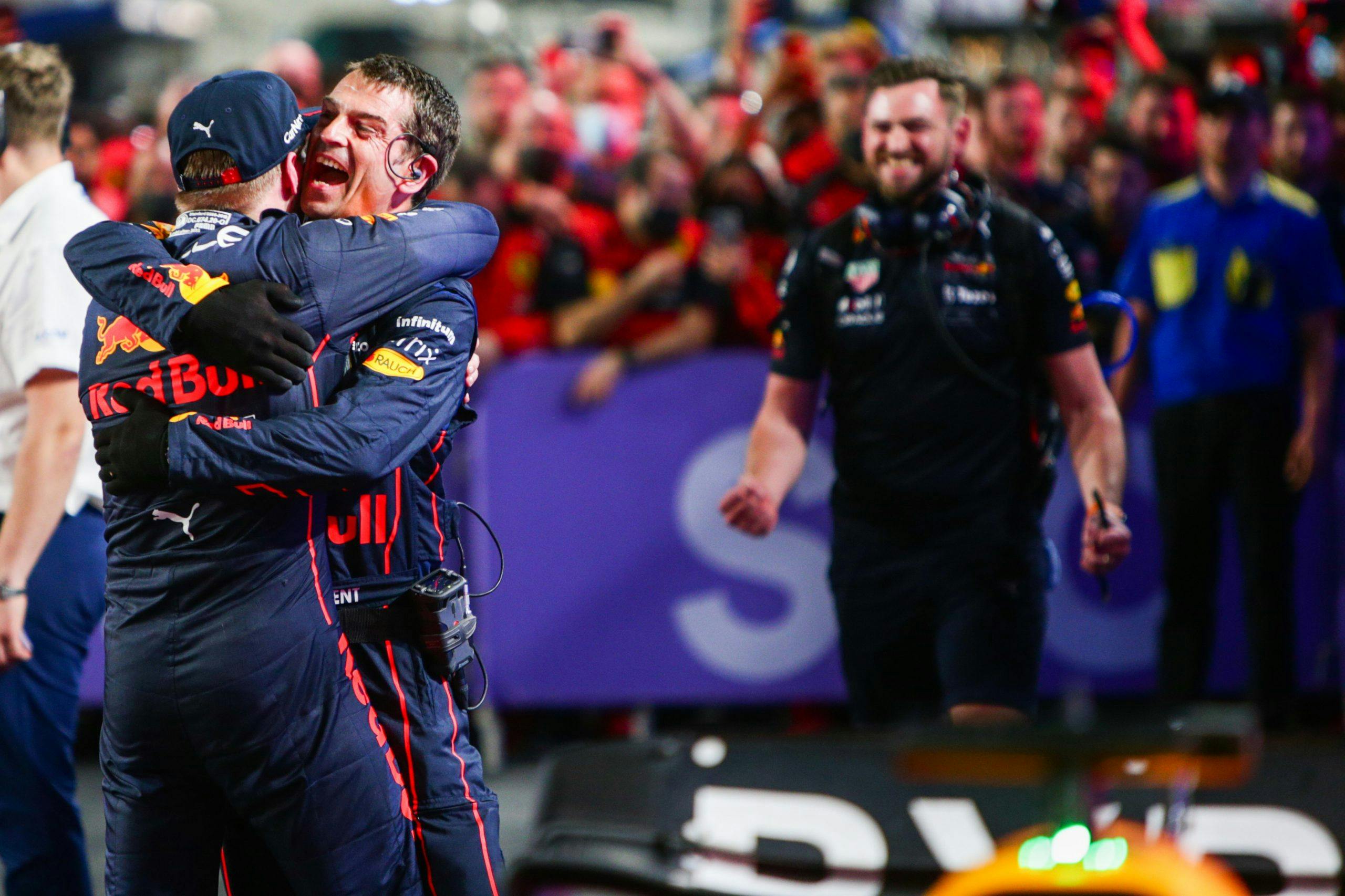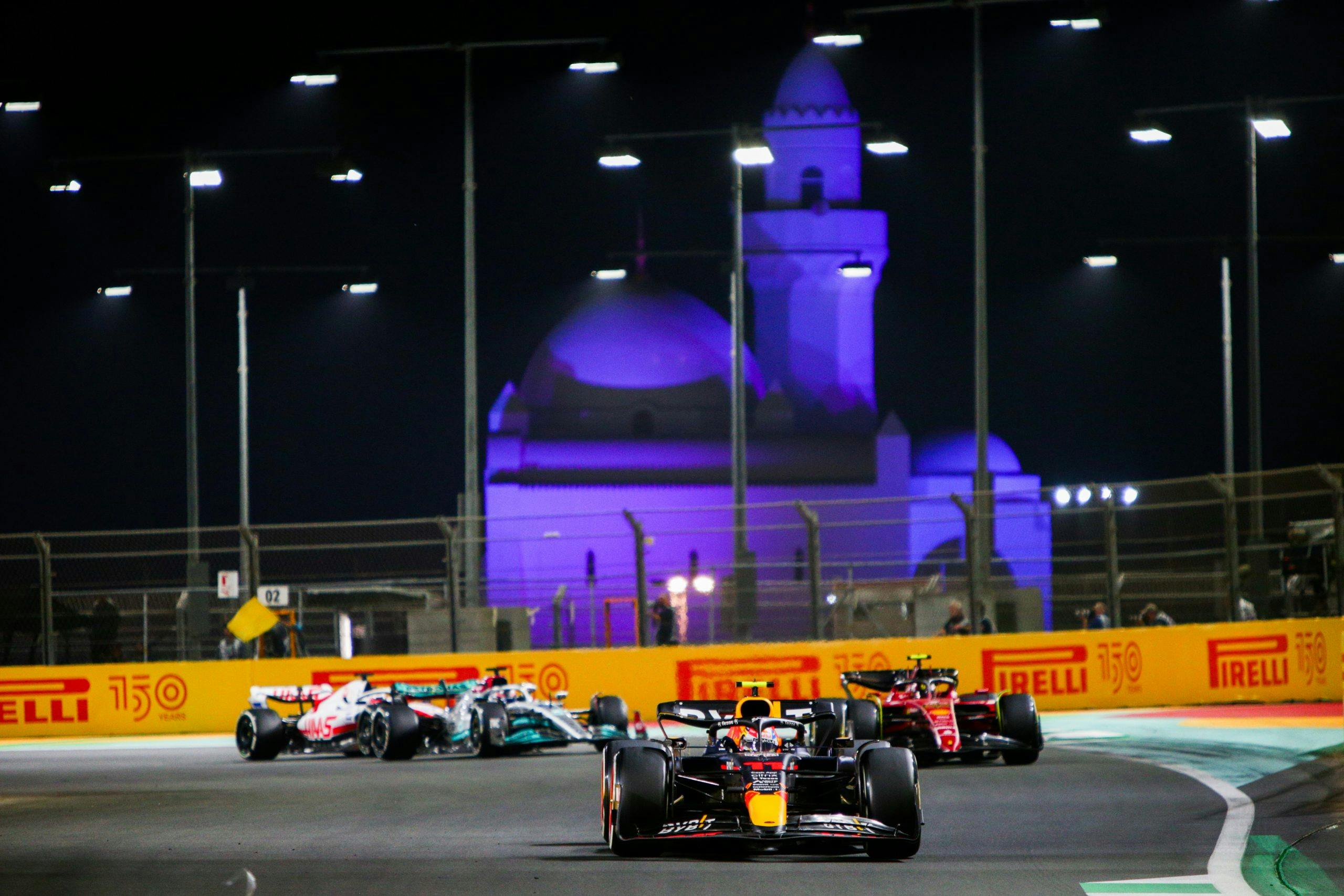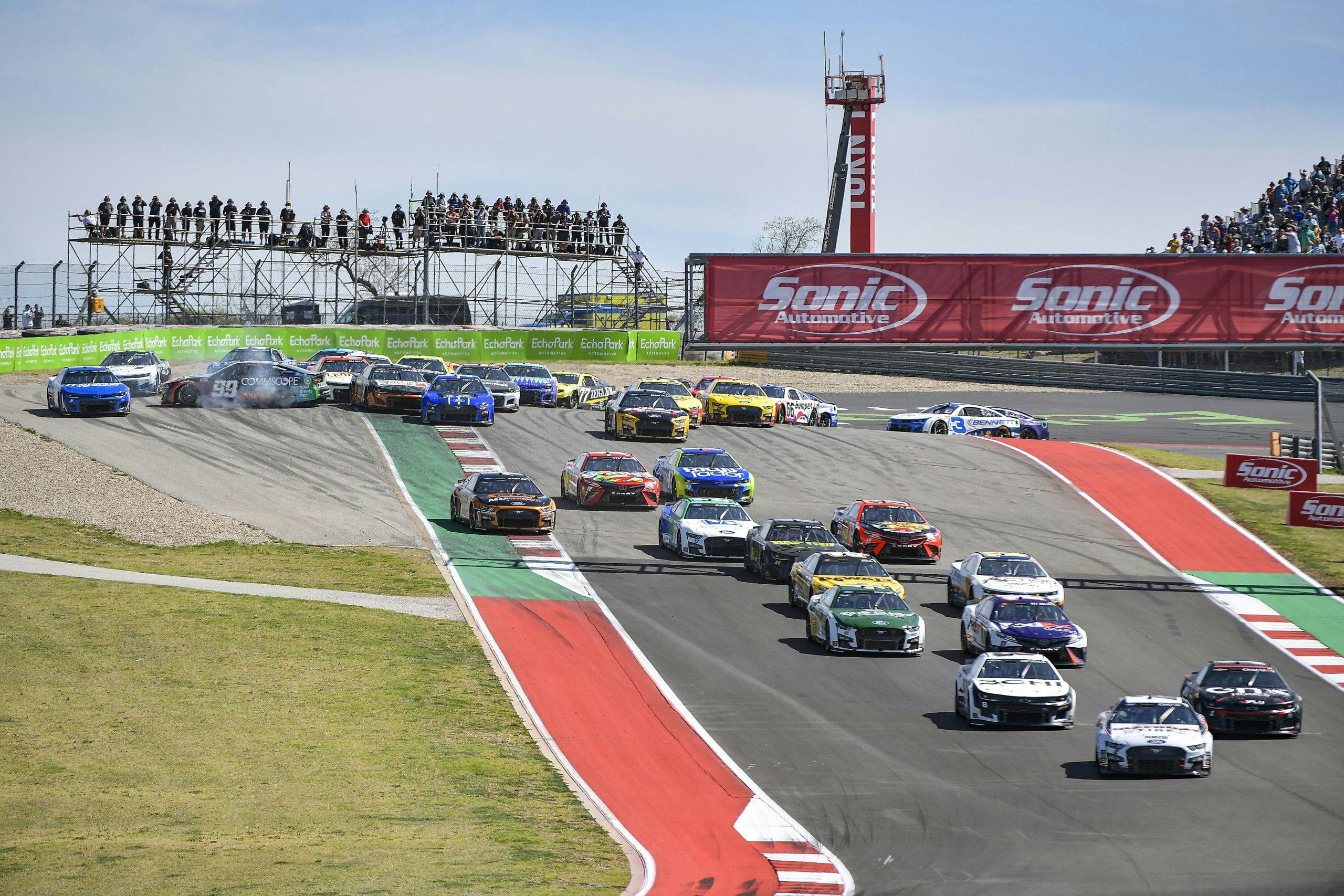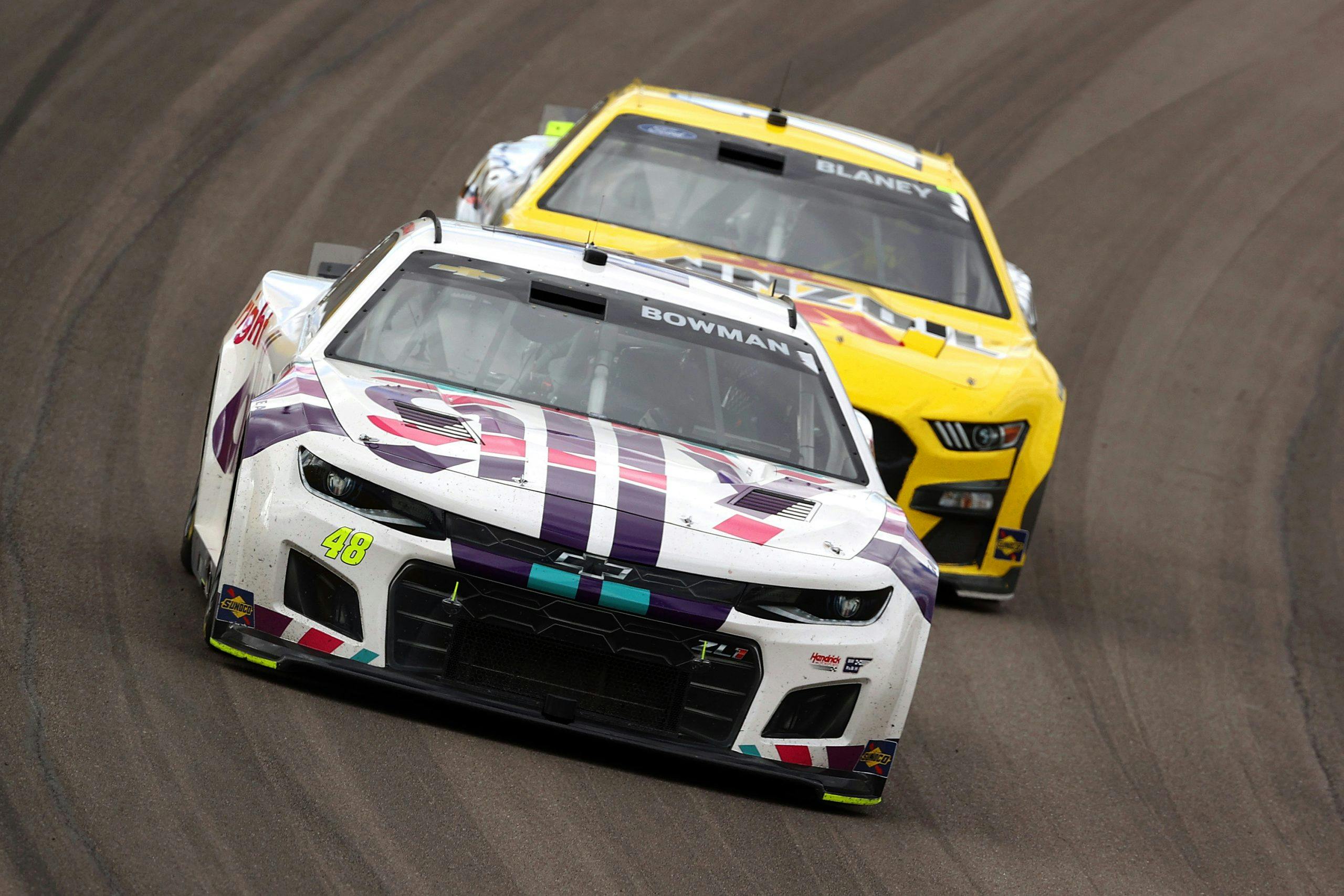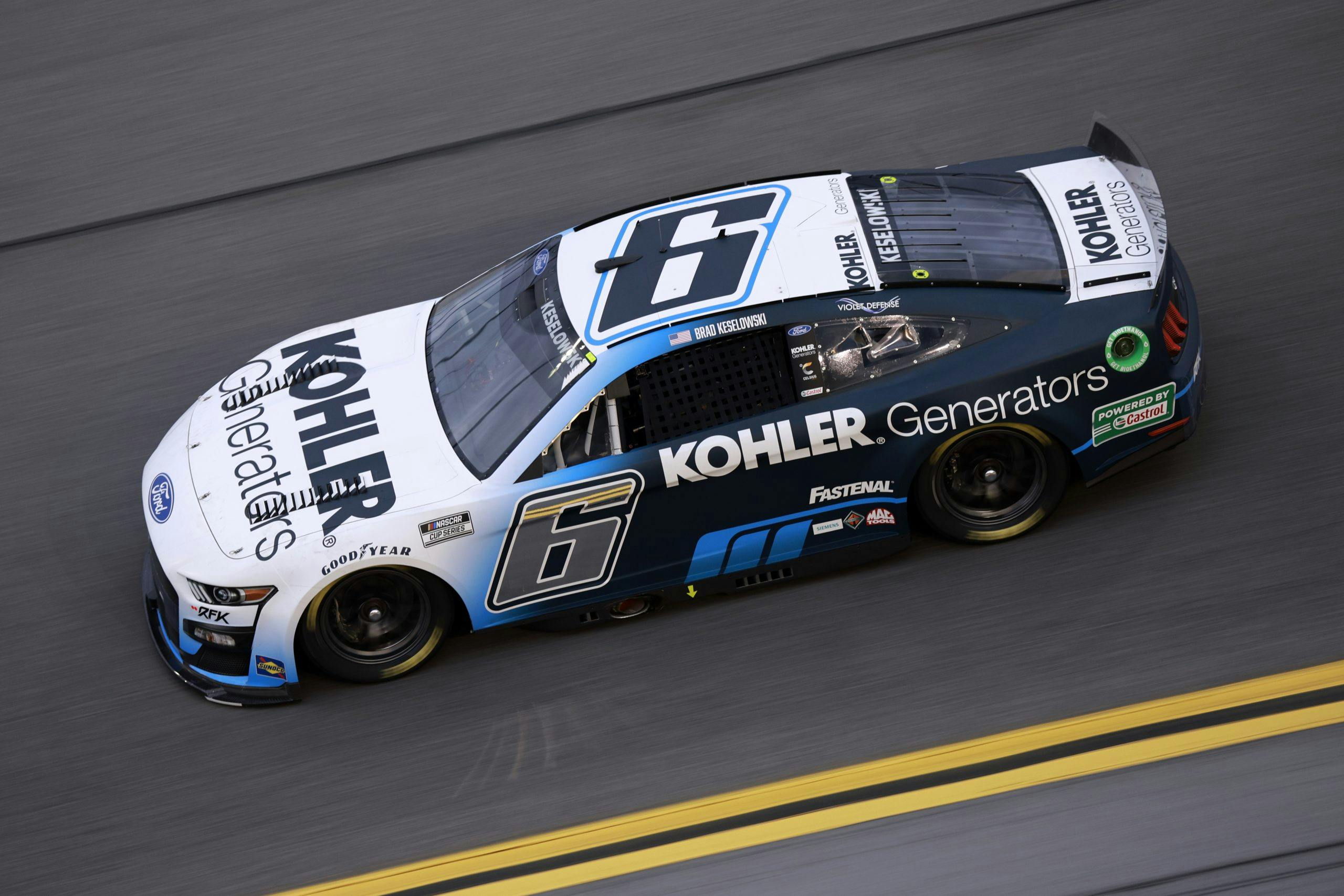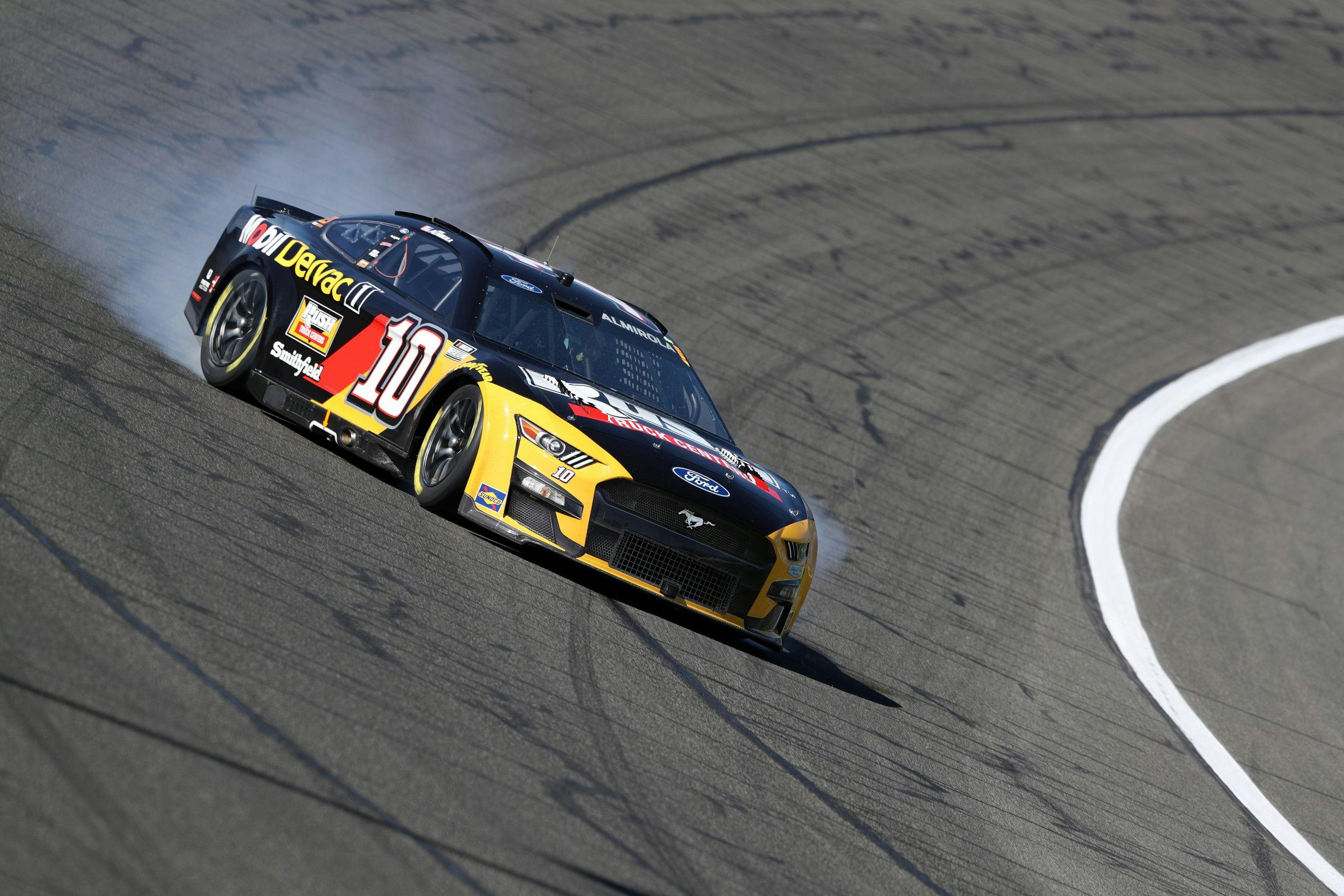Are F1 and NASCAR manufacturing drama?
Typically, Formula 1 and NASCAR are worlds apart. That’s not entirely the case this year, with the two series bound by their respective debuts of brand-new cars. F1 is two grand prix into its campaign with a heavier, swoopier open-wheel racer. NASCAR is six races into its Cup Series season, utilizing an independently-sprung sequential-shifting stocker. Despite the contrasting disciplines, both fresh platforms have the same intended purpose: produce a superior on-track product.
Let’s take a look at how the two series go about this goal. For the first time since the 1980s, when F1 cars resembled upside-down airplanes, ground effects are utilized in the aero regulations for the new car. Its floor has two large channels running front-to-back. Air travels under the vehicle and through the Venturi-shaped channels, which creates an area of low pressure and “sucks” the car to the track. Since the underside of the car provides much of the grip, the need for air on the wings to generate downforce is reduced. Ahead of the 2022 season, the new cars were expected to handle better in the less-turbulent wake behind opponents.
Downforce is still important, though, so F1 implemented redesigned wings that create a smaller wake which exits the car at a higher angle. When a 2021-spec car followed an opponent, it lost 46 percent of its downforce. This year’s car trims that number to 18 percent.
Same song, different verse, in NASCAR. The Next Gen car has a flat floor and a rear diffuser that allow for more clean air to travel to the trailing car.
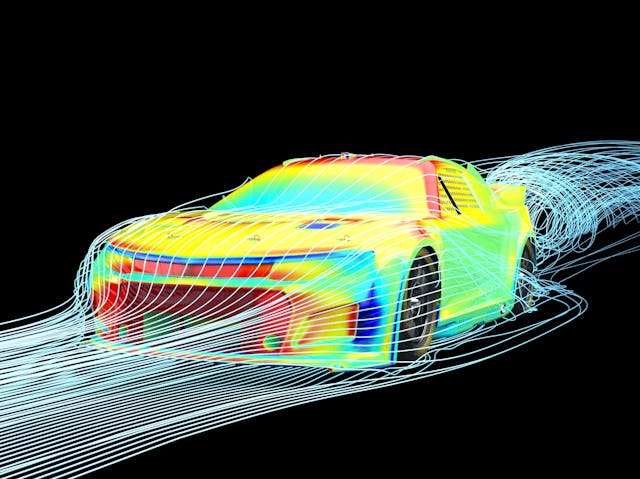
Research and development rules have changed too. Money that F1 teams can throw at their new-fangled cars have been capped at $140 million, annually. Wind tunnel research is also capped and doled-out to teams based on points position, with first receiving the least amount of tunnel time. NASCAR also lowered the cost to field a team by increasing the number of “sealed” components (i.e., not eligible for modification). Both sanctioning bodies hoped for a more even playing field entering the 2022 season.
Spoiler alert: So far, the new cars—and rules—are holding up to their respective preseason promises. Both series have showcased incredible on-track action within the first part of their season. Sunday, at the Saudi Arabia GP, Max Verstappen and Charles Leclerc swapped the lead multiple times in the closing laps before finishing less than a second apart. Big-money Mercedes has been relegated to mid-pack. The first two grand prix have been a feeding frenzy for teams like Haas and Ferrari—groups that couldn’t get out of their own way in 2021. Similarly, the early-season storyline in NASCAR has been the rise of the small teams against the typical stock-car Goliaths. And finishes have come down to the final lap more times than not.
Therein lies the rub. These level playing fields and photo finishes in both series were entirely the consequence of these new cars and rules. Artificial sweetener, fabricated drama—call it what you want. But should we consider it a breach by F1 and NASCAR, or an acceptable avenue for quality racing?
Most race fans fall in one of two camps:
1: You hate the fact that F1 and NASCAR had to implement new cars in order to amplify wheel-to-wheel competition. You also hate F1’s Drag Reduction System (DRS), NASCAR’s stage breaks, and IndyCar’s Push-to-Pass. Those are corny constructs to accordion the field. You believe true, pure auto sport can be found in thin rule books and varied fields.
2: You love the new cars. You watch auto racing to be entertained. While they’re at it, put each racer in a stock Crown Vic, shuffle the running order every five laps, and award bonus points to the driver with the most damage.

I’m not sure where I land. We fans tend to examine bygone ages of motorsport through rose-colored glasses. The legendary cars and drivers from days past have distracted us from the ugly truth: 20th century auto racing was lacking. In any series, races were typically decided by seconds, not car lengths (providing the leader and second place were even on the same lap). Sure, there’s an array of countdown videos on YouTube that depict Formula 1’s greatest finishes, but we must remember those are drops in a sea of snoozers. The same can be said for NASCAR. Tons of NASCAR fans gush about Nineties NASCAR. Truth be told, it was largely boring and most of the time Jeff Gordon stunk up the show.
On the other hand, I don’t want my beloved F1 and NASCAR to turn into a spec series. Any more heavy-handedness by the series to manipulate the on-track product could endanger the legitimacy of the sport.
NASCAR has already experimented with manipulating the track surface by laying down a sticky syrup in sub-optimal grooves to garner side-by-side racing. And just last week they raced on a newly reconfigured Atlanta Motor Speedway. The steep banking allowed drivers to mat it all the way around the track, which produced pack racing and a record number of lead changes—and cautions. This is a dangerous path. Before we know it, some track owner will lobby to put a jump on the backstretch.

I blame Netflix for this conundrum. Boring races are much less acceptable when you have an endless supply of movies at your disposal. Oh, and one of those titles, Drive to Survive, is a more-compelling version of Formula 1. (The actual 2018 F1 season was a yawn compared to first season of the drama-filled docu-series.) Back in the day, watching an uncompetitive race on the couch was a better alternative to Sunday chores.
Now, the moment a race falls into a lull, I find myself picking up my phone or switching over to the red “N.” It’s the same reason why I taste nothing when I bite into a carrot: I’ve had my taste buds rocked by aspartame and Dorito dust. So at least for now, the new cars in Formula 1 and NASCAR are blessings. I’ll continue to tune in. The on-track action may be artificial, but it’s so dang good.

